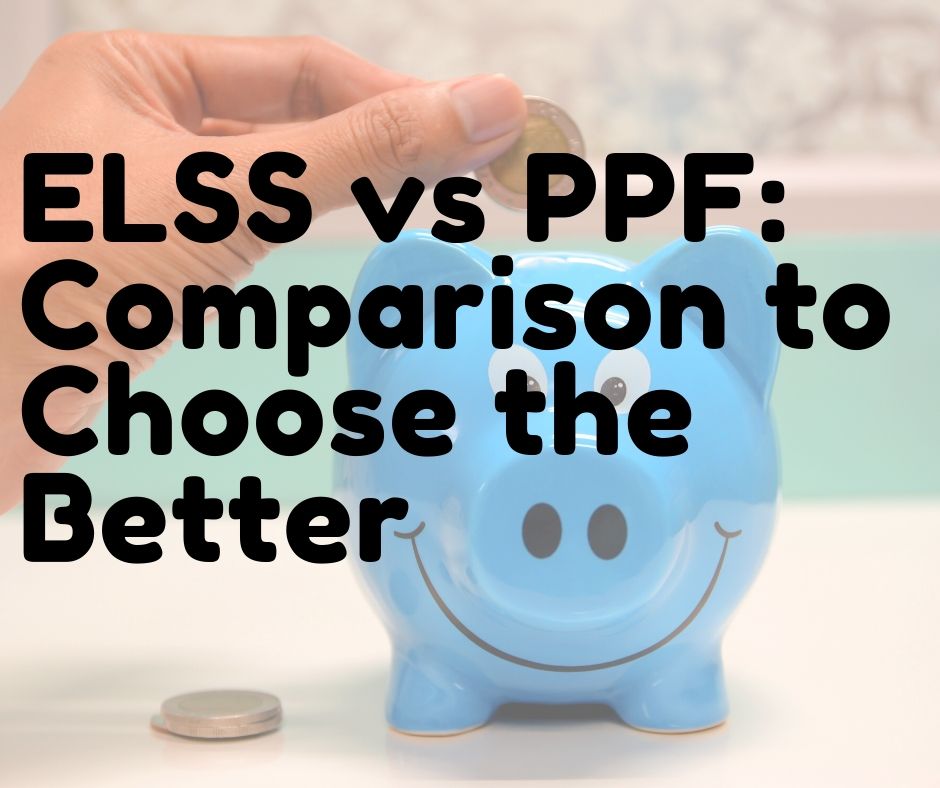ELSS vs PPF: Comparison to Choose the Better
- 11 April 2020 | 946 Views | By Mint2Save

The Equity-linked Saving Schemes (ELSS) and Public Provident Fund (PPF) are getting traction in the past few times as individuals are getting aware, and both of them are tax-saving instruments. A deduction in tax reduces your overall liability. Endowments up to ₹ 1.5 lakh a year qualify for tax deduction under Section 80C.
What are ELSS funds?
ELSS is the only mutual fund that fulfills the purpose of saving taxes as well as help you to create wealth for a long time. It is a suitable investment medium for a person with long term objectives.
ELSS provides a combination of the highest gain of 12% and above, as well as the lowest lock-in period of 3 years, which is by far the best investment alternative when differentiated to other tax-saving instruments in the market under section 80C of the Income Tax Act, 1961. Plus, it has a higher return potential.
What is PPF?
The Public Provident Fund is a Government of India’s backed debt forte, ideally for long terms financial targets such as future education of children or planning retirement goals. PPF carries a more extended lock-in period of 15 years, which can further be extended for another five but, there is a provision of partial withdrawal after year six.
Availing a loan on a PPF account is one such facility available from the third year till the sixth financial year finishes. However, the amount of investment is set at 25% of the pending balance, which the user has to repay in 36 months. It is considered that the interest charged is 2% over the current interest price.
Since both PPF and ELSS are tax-saving instruments. But both of them have significantly different features. The detailed information of both of them are summarized below:
PPF(Public Provident Fund)
Currently, the interest rate on PPF is 8% from Oct 2016. The Government can change this rate. But the return is fixed. You get the benefit on the 31st March of each year as per the prevailing interest rate.
A minimum Rs.500 and maximum Rs.1,50,000 can be deposited in one financial year in a maximum of 12 installments.
Interest and the maturity amount is exempt from tax. Also, you get a reduction in income for the contribution that you have made in PPF during the year up to RS.150000.
A partial amount can be drawn out from the 7th year onwards. PPF investment is a little less risky because the Government of India backs it. Hence, they are a better financing alternative for highly risk-averse investors.
The returns are tax-free on PPF investments. Banks and the post office offer PPF. To begin investing, you would require a PPF account opened, followed by a KYC in process. Additionally, a joint account can also be created for and with a minor.
Risk factor:
PPF has a lock-in duration of 15 years. You will be able to draw out your funds from year seven onwards partially, or you can either remove the amount or extend the account for a block period of 5 years.
ELSS:
ELSS funds are exposed to market risks and generally put money in equity and equity-related instruments and, which makes them a better investment alternative for those who are willing to risk volatility for the sake of long term gains.
The returns on ELSS rely on movements on the market. In ELSS, yields of over INR 1 Lakh are considered long term capital profits and hence are taxed at the rate of 10%. ELSS, however, take a lock-in period of only three years, but customers can keep the investment for a more extended period as well.
There is no particular time horizon, so you can carry on with the financing as long as you wish.
The mutual fund house offers ELSS, which is the reason to invest straightly through the main website, online mutual fund investment portals, or through Demat agents and registrars.
In ELSS, you can start investing monthly with INR 500, and there is no upper limit of investment, which is referred to as the Systematic Investment Plans (SIP)
Risk factor: Is ELSS safe?
Stocks are much riskier than traditional investments. In a market downturn, you have the risk of losing your principal investment.
Winner Between ELSS VS PPF
Both PPF and ELSS are excellent tax saving instruments but with different targets. PPF comes with negligible volatility and risk at the cost of returns, whereas ELSS, with its inflation-beating performances, is excellent for long term goals.
If you want secure and established returns, go for PPF.

ELSS will have a lock-in period of a minimum of three years. These funds put money in stocks and debt funds. Hence returns are not fixed and also depend on market conditions. If you are ready to handle danger or threats, then choose ELSS. But as per the records, ELSS is also generating good returns, which is around 12%.
Either way is, one should invest their money both in ELSS and PPF in 60:40 ratio. As ELSS gives better returns and PPF has slight risk, by any chance, if you lose your cash In ELSS(which is a very very rare case), you will have PPF as a backup. And if you invest your whole amount in PPF, then there are chances that you lose it to inflation.









